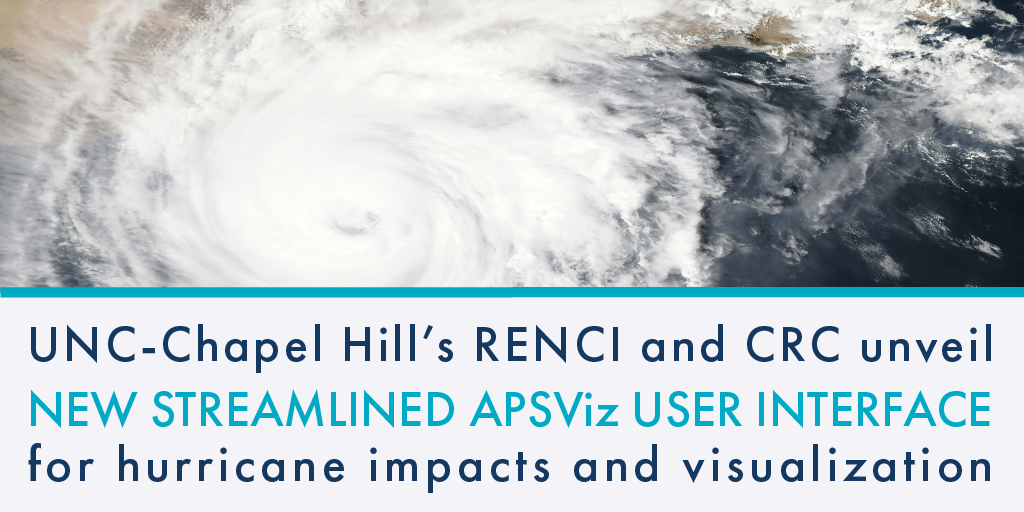
APSViz could be a key resource for state and federal stakeholders and response teams as Atlantic Ocean heats up
The 2024 Atlantic Ocean hurricane season started off with Hurricane Beryl, an intense Category 5 storm that caused much damage along its path through the Caribbean region before weakening and making a final landfall along the Texas coast in early July1. Beryl was followed by Debby, which dropped significant precipitation along its path from Florida to New England. After a lull in tropical activity in the North Atlantic due in part to airborne Saharan dust over the subtropical ocean, a critical cyclone formation area2, storm activity is returning to a more active state with Francine approaching landfall along the Louisiana coast.
Over the past four years, UNC-Chapel Hill’s Renaissance Computing Institute (RENCI) and Coastal Resilience Center (CRC) collaborated to develop a state-of-the-science, cloud-ready data engine, visualization, and information delivery system called the ADCIRC Prediction System (APS). APS computes and disseminates real-time coastal hazards information. A key component of this is APSViz, a webportal developed by RENCI’s Earth Data Science group, led by Dr. Brian Blanton, that visualizes the complex computer simulations. After the 2023 hurricane season, the APSViz framework was re-engineered to improve the user experience and mapping display response times, resulting in a website that is much more performant and intuitive.
“With every storm, we are very keen to continue improving the accuracy, efficiency, and quality of products we are able to deliver,” said Dr. Rick Luettich, Lead Principal Investigator of the Coastal Resilience Center at UNC-Chapel Hill.
During significant coastal events, APS and APSViz have the potential to serve as key resources for state and federal stakeholders and response teams. By providing critical, real-time, and high-resolution information to assist officials in making decisions for timely evacuations and other preventative measures, they offer substantive value to response strategies that reduce negative impacts from these events.
“It’s an alternative prediction capability that has shown to be very skillful at very high resolution,” said Blanton.
Figure 1. The latest APSViz interface displays real-time results from the ADCIRC Prediction System (APS). This example is for Hurricane Francine as it approaches Louisiana.
The primary computer model for coastal storm surge and wind wave simulation is ADCIRC, co-developed by UNC-Chapel Hill and University of Notre Dame researchers, along with other academic, federal, and industry collaborators. Originally developed for retrospective simulation of past meteorological events, ADCIRC has been increasingly used for forecasting and predicting weather-driven, coastal environment impacts. ADCIRC is the core computational model in the ADCIRC Prediction System, and APSViz is a “window” into these real-time forecasting activities.
According to NOAA, hurricane activity for the 2024 season is expected to be relatively higher than normal for the North Atlantic Ocean3, which typically gets about 14 named tropical events each year. The 2024 North Atlantic season will be a critical proving ground for the APSViz infrastructure as it becomes more generally available at https://apsviz.adcircprediction.org. For more information on the infrastructure behind ADCIRC and APSViz, see our previous blog post here.
- https://www.climate.gov/news-features/event-tracker/category-5-hurricane-beryl-makes-explosive-start-2024-atlantic-season
- https://weather.com/storms/hurricane/news/2024-07-15-saharan-dust-atlantic-hurricane-season
- https://www.noaa.gov/news-release/noaa-predicts-above-normal-2024-atlantic-hurricane-season


